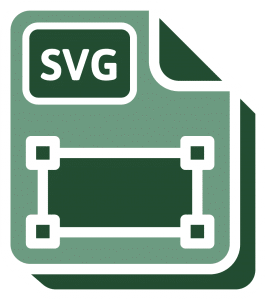Welcome to our third post in the new series. We aim to demystify the science behind the graphic design industry and explain what we do in easy to understand terms. This post is about IMAGE FORMATS.
Image Formats, what do they mean?
Have you ever wondered what the difference is between a JPG and PNG file or why the format of the logo on your website is different to the version you need to print? As a business or marketing person, understanding the different image file types is essential to ensuring your brand is always represented correctly. It will also help you to better communicate with designers, developers and printers.
AI
AI stands for Adobe Illustrator. An AI file can be opened and edited with Adobe illustrator, a vector based programme that’s great for creating logos, illustrations, backgrounds and other graphic and typographic elements for print. The fact that it’s vector-based means it can be scaled to virtually any size with no loss in quality. An AI file is the master version of any logo, the rawest or raw. It is from an AI file that all other file types are exported. Uses: Print Items (business cards, brochures, signage)
JPG
This is the type of image file that you see most often on the internet and smart phones. It is a compressed image format which drops unneeded colour information that cant be detected by the human eye. The downside is that the original quality of the image is reduced. This can be a problem for high quality printing. The image will not look as sharp and defined. If using JPG files for print, you need to watch the resolution and file size. Uses: Electronic Files (websites, emails, Microsoft Word)
SVG
SVGs are very useful for website design, especially graphic and iconic elements. Being a vector format, they will scale infinitely without pixelating, which comes in handy for cross-device quality control. They’re also extremely lightweight in the file size, which makes them load faster, making them very useful indeed. Uses: Websites
PNG
PNG stands for Portable Network Graphics and is another raster image type. The main difference between a PNG and a JPG is that a PNG file can have a transparent background and is generally larger and of higher quality. PNGs are great for interactive documents such as web pages but are not suitable for print. Uses: Websites
Are these the only ones?
There are plenty more image formats out there such as gif and tiff, but we’d need another 10 pages to describe them all. We’ve just mentioned the main ones.
Feel free to share Passion’s Easy Genius Guide with a friend or colleague, or print out the downloadable PDF for your work space.




